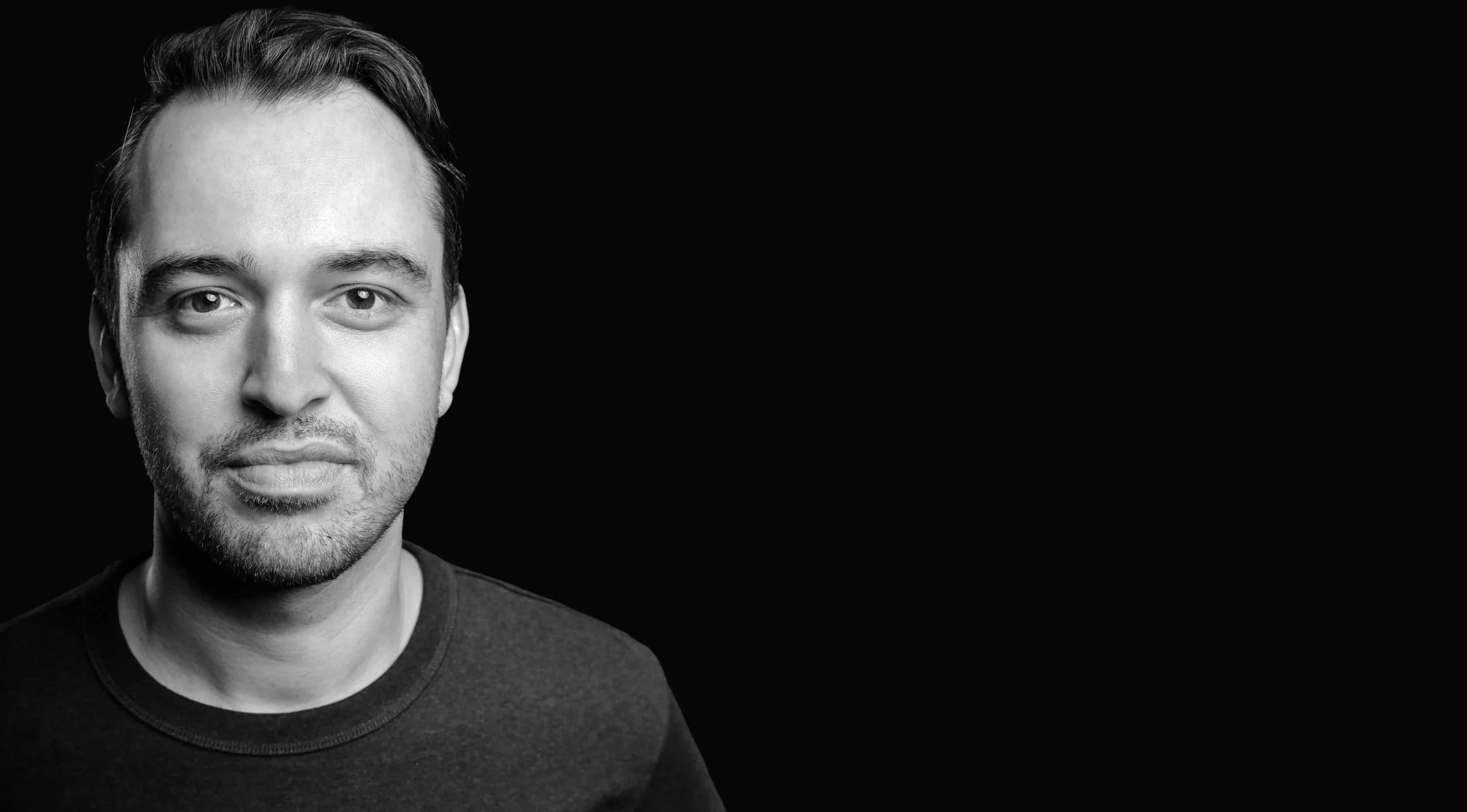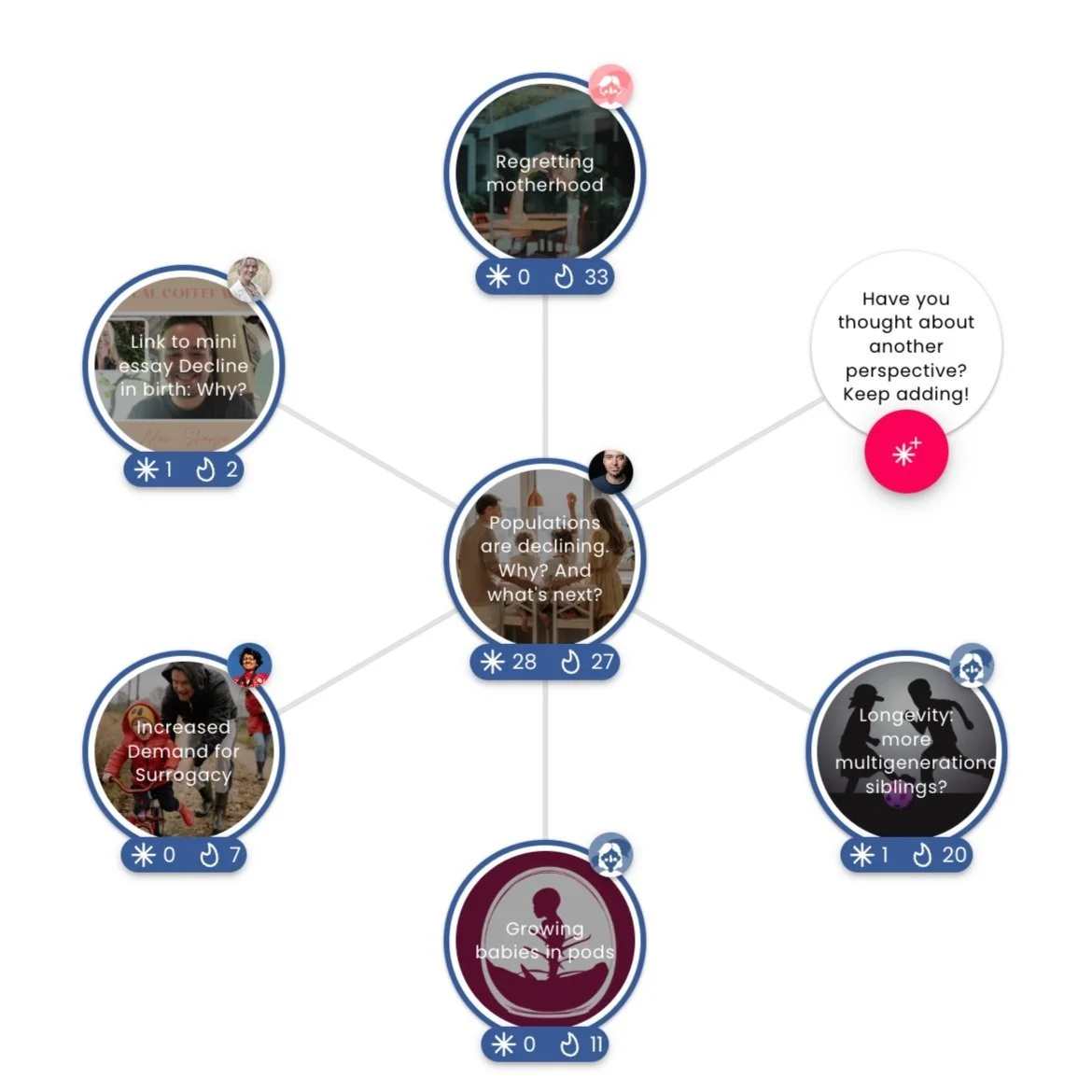The impending fertility shock: why we're having fewer kids and what we can do about it
Billionaires like Elon Musk and Jeff Bezos have seized a lot of airtime with dire warnings about the collapse of civilization through an imminent population decline. It's a bigger threat than climate change, Musk reckons, as he urges the governments of advanced industrialized nations to get their citizens busy making babies or “the cultures of Italy, Japan and France will disappear."
As Musk's hyperbolic words highlight, unpacking the impacts of future demographic transitions is a Pandora's box of massively complex and interconnected elements. These elements are easily politicized, simplified, and distorted by agendas. The spread of misinformation on the theme further muddies the waters, making comprehending and planning for country-specific declines in fertility rates inherently unstable.
Unpacking population decline via multidimensional understanding
Future population transitions pose a complex challenge, making them a perfect topic for discussion and sensemaking on Hunome. It needs a multidimensional understanding built through deliberation by diverse perspectives.
In 2023, under the guidance of Adam Sharpe—a youth foresight specialist, UN consultant, and lead at People Power Game—a group of people convened on Hunome to build a multifaceted understanding of the 'why,' 'how,' and 'what' behind projected population shifts and their impacts.
Renowned foresight specialist, Adam Sharpe facilitates deliberation on Hunome to build a multidimensional understanding of impending global population shifts.Hunome's collective sensemaking platform empowered them to strip away sensationalism, grasp the complexities and implications in differing contexts, and build together a comprehensive understanding that interweaves many of the issue's interrelated dimensions.
We´ve coined the term Humanathon to describe these coordinated mass deliberations, which leverage a pan-global spectrum of viewpoints to address and positively impact human welfare, social justice, technological, global governance, and environmental sustainability challenges.
Learn more about and participate in upcoming Humanathons here.
During the inaugural Population Decline Humanathon, the group explored the level of concern we should have, the geopolitical complexities involved, and some potential influences on why it's occurring. These influences ranged from the impact of "forever chemicals" on fertility to the economic factors driving smaller families in high-income societies. Additionally, the group examined the challenges and often overlooked benefits of aging populations. The inevitable multicultural shifts driven by immigration also feature.
Since the initial sensemaking, others have continued to contribute, and the emergent multidimensional understanding is readily present. The thinking is alive and evolving, awaiting your contribution to make it more nuanced and robust. Collective sensemaking is a dynamic process that thrives on ongoing insights and perspectives.
In what follows, we examine some of the thought journeys already undertaken by participants on Hunome. The contributors utilized Hunome SparkMaps to build a dynamic understanding of global population changes. Their efforts testify to the breadth and depth of emergent insights unearthed in this collective exploration. This is fertile ground for your own unique additions and insights to enrich the understanding further.
The key takeaways you should know from the collective sensemaking on global population decline
The projections Musk and others cite and interpret are real and credible. Birth rates in two-thirds of the world's countries already fall below the replacement rate needed to maintain current population levels. This includes geopolitically powerful countries like China, the US, the UK, most of Europe, Japan, and South Korea. This decline is a little-known long-term megatrend that has been steadily occurring for decades. In recent years, however, the rate of decline has accelerated and is expected to continue.
Several participants quickly nuanced the demographic projections, emphasizing that it's not a straightforward linear trajectory. While the global population will eventually peak at around 10-12 billion people and then decline, sub-Saharan Africa will remain a demographic outlier for the foreseeable future. One contributor cited UN statistics showing that the sub-Saharan population is expected to double by 2050. Another study suggests that one in every two births will be in Africa by 2100.
Predicted demographic shifts signal a future that will likely look different, with a major reshaping of the world order and its ethnic distributions. This dramatic change can fuel weaponized anxieties, as evidenced by the convergence of concerns over falling birth rates, safeguarding national borders (and cultures) and fears of rising immigration. The narrative suggests that the world once dominated by the West will be supplanted by simply more fertile cultures.
However, one collective build participant offered a different perspective: "Rather than the West turning insular," they reflected, "it's a great opportunity to think about how we must change to create a world that is more inclusive for everyone… and move away from Western superior thinking [and enable] chances for others to be heard and thrive."
Hunome SparkMap: Collective sensemaking on projected global population decline.The demographic projections cause national policymakers and economists pronounced anxiety. In the vast majority of countries, the combination of an aging and declining population has profound practical implications. The capitalist model that drives the world economy and thus each country's financial wealth assumes and chases growth. Yet how can businesses grow in a country when they are unable to recruit workers? Who will pay for the upkeep of older people in their ever longer golden years? Who is going to care for them all? How does a society built to cater to more young people than older people readjust to the new demographic realities?
Diverse participants pondered many reasons why fertility rates are declining and what we need to do about it.
1. Fading obligations: how societal shifts Influence family planning
A Hunome SparkMap contributor linked declining birth rates to the diminishing influence of religion and traditional social expectations. This is particularly evident in countries such as Germany, the UK and Japan, where secularism and humanism, powered by market economies, have given individuals more choice and control over their life decisions.
Various participants observed that in many countries, an individual’s life priorities have pivoted to a focus on seeking personal satisfaction, fulfillment, and self-actualisation. This shift has led to an explosion of new possible professional ambitions, personal identities, and relationships. People now tend to choose the belief system, religious or not, that resonates most strongly with them. Consequently, the traditional expectation to prioritize starting a family has diminished, now coexisting and competing with a myriad of other possibilities.
A contributor proposed that this shift in mindset informs changing attitudes towards childlessness. Choosing not to have children is not just increasingly common but also increasingly accepted and normalized, as both women and men pursue diverse lifestyles and personal passions outside of parenthood.
2. The price of parenthood: economic strain and the future of families
Economic factors undoubtedly hold the reins when it comes to family planning. Humanathon participants, in vastly different contexts, expressed the daunting reality of rising living costs, increasing debt, shaky job markets, and the ever-mounting expenses of securing a roof and raising children. This struggle is a recipe for hesitation.
One participant's observation struck a chord, highlighting how economic realities are eroding the traditional support system for parents. The notion of ´it takes a village to raise a child´ is under threat as wider community ties and extended family members, once strong support for potential parents, are fading. The participant's poignant question, 'Parents are not meant to raise their children alone, but where is the help now?' resonated with many. In response, another participant pointed out the emergence of social initiatives aiming to fill this void, underscoring the growing need for alternative and communal child-rearing solutions in the face of economic and personal pressures on parents.
Contributors wrote that economic considerations hit unmarried people and lower-income families especially hard. The agonizing choice becomes quality childcare or putting food on the table. Economic disparities create a harsh reality where financial stability becomes the gatekeeper to parenthood. The increasing financial strain begs a concerning question: In wealthy nations, is childbirth morphing into a privilege, a luxury reserved for those who can afford it?
Another contributor considered the economic systems we live under more generally and how we measure a country's prosperity and stability. They questioned whether we must reassess the assumption that infinite economic growth is integral to social well-being and healthy societies. The model invariably leads to social inequality, environmental degradation and overconsumption. Maybe we need a more sustainable kind of economics: “If we choose a deliberate decline resulting from increased well-being, then we could take the fear out of family planning and make a better future for people and the planet. We must choose.”
3. Beyond motherhood: education and the rise of choice for women
The more women learn the less they want children. A participant highlighted research indicating that regardless of the country, higher formal education for girls correlates with lower fertility rates compared to their less-educated counterparts. Educated women generally have more life options and more control over their decisions, allowing them to distance themselves from traditional gender expectations if they choose. This autonomy enables them to pursue personal, professional, and social ambitions more fully. Whether a girl is born in Ethiopia or the Netherlands, this association holds true.
A participant cited French sociologist Charlotte Debest, who studies the rise of `voluntary childlessness´ and proposes that social, legal and gender changes since the 1970s have made a woman's decision not to have children more socially acceptable. In many industrialized democratic societies, the legal enshrinement of the human right to bodily autonomy contributes to a reduction in fertility rates.
For many women, balancing the desire to have children with the desire to achieve professional ambitions and personal goals remains challenging. One contributor emphasized that the right to choose if and when to have children is a fundamental pillar of gender equality and must be politically and socially protected at all costs. Another participant agreed, saying that societies need to introduce better policies to support women's choice to have children so that it doesn´t impact their career options and ability to return to the workforce after childbirth.
Other contributors suggested that the rise in childless women may also stem from an inability to find a suitable partner. Some reports indicate that educated women struggle to find compatible partners. One person added anecdotally that educated women are more selective and prioritize a multitude of attributes in a potential partner, particularly their emotional stability and responsiveness.
4. Silent threats: how pollution could be harming our fertility
Scientists are quietly compiling evidence that we may be on the brink of an environmentally induced global fertility crisis. And, like climate change, we´ve only got ourselves to blame. A participant in the SparkMap build incorporated research by reproductive epidemiologist professor Shanna Swan, which proposes that environmental pollutants, such as air pollution and endocrine disruptors in forever plastics, impact human fertility rates. Her review of studies illustrates that over the last four decades, the sperm count of men from Western countries has dropped by as much as 50 percent. Similarly, environmental toxins may be changing human sexual development in unprecedented ways. If she's right, and some disagree, then the implications are massive. Currently, the EU is rushing to ban BPA plastics found to be present at high levels in many European countries, with the negative consequences on sperm quality and fertility as one of a range of likely effects of BPA. Scary stuff!
5. The delayed parenthood dilemma: fertility risks and ethics
One participant discussed how many people in her society are delaying marriage and childbirth until later in life. The delay carries a trade-off, as later births are more risky and, at scale, result in fewer births.
Older men have lower quantities and poorer quality sperm, while conception and pregnancy are more uncertain for women as they age. One SparkMap contributor noted that the rise of later-life parenthood means more people rely on technological and medical assistance to conceive. They saw a link between fertility issues and an increasing demand for surrogacy or ´rented wombs´ as they provocatively described it. So prevalent countries such as India have banned transnational surrogacy, forbidding foreigners to use Indian women as surrogates for children they are unable to have on their own.
Another contributor added that birth and surrogacy opportunities are also expanding via developments in IVF techniques, genetic testing, and embryo selection techniques. Intercountry surrogacy and technological advances introduce a host of ethical and political issues that need to be addressed.
6. The wellbeing hangover: are young people wiser about the opportunity costs of parenthood?
A Humanathon participant wondered if younger people increasingly perceive childbirth as a threat to their well-being. The rise of mental distress and uncertainty in young people in many societies may reduce the desire to raise a family. Naturally, people struggling with their own lives may worry about their ability to cope and care for a child.
The participant raising this idea points to the work of professor of sociology Orna Donath, whose studies expressed in her book Regretting Motherhood flips the lingering and pervasive social pressure on women to have children. The pressure manifests in the assumption that women who don't have children will regret it later in life. Donath's studies found that some women with children report a comparative decrease in long-term happiness. Donath believes that they ´regret´ having children due to the stress, gender responsibility imbalances, worries about the future, and complexity involved in raising children.
Participants wondered if young people are much more aware of the impact responsibilities required and the impacts this has on their lives compared to earlier generations.
7. Pets or children? The shifting landscape of emotional fulfillment
Participants also observed that with material and technological advances, the perceived need and desire for children have significantly diminished. These advancements offer people a wide array of ways to find emotional connections tailored to their unique interests and desires. As a result, people are discovering personal satisfaction and emotional bonds that present attractive alternatives to traditional family structures.
One participant emphasized the proliferation of pet ownership. In a time of insecurity, pets are more affordable and manageable surrogates, providing emotional fulfillment comparable to having children. At the same time, it still grants the ´pet parent´ a degree of freedom to continue pursuing their own ambitions and interests. The best of both worlds?
This growing attachment to pets as alternatives to children highlights how people now seek and achieve emotional satisfaction and connections through unconventional means. Consequently, modern society's paths to interpersonal emotional bonds are becoming increasingly diverse and personalized.
8. Rethinking population aging: From burden to resource?
One contributor contested the negative narrative that aging populations are inherent forces for social and economic instability. Behind this notion is the ́othering ́ of older people as somehow inferior, wholly dependent on younger people and unable to offer meaningful contributions to economic or societal well-being. Instead, the participant proposed that:
“Population aging is a triumph of health and development—longevity proves progress on multiple fronts. It is not to be feared but to be celebrated and planned for. We must rethink population aging to ensure we harness the silver dividend via enlightened policies and intergenerational dialogue.”
9. Existential risk and fears of the future: Are we getting too scared to bring children into a chaotic world?
Several participants suggested that people are much more cautious about bringing children into an unstable world. They pointed to various environmental, economic, political, and social challenges as reasons to avoid having a child. For some, it's morally unjustifiable to bring children into such an uncertain and damaged world.
This discussion on the contemporary poly-crisis took a significant turn, drawing attention to the alarming rise of eco-anxiety in young people and the pessimism this fuels about the future. Adam Sharpe, among others, underscored the importance of striking a balance in education—teaching the world as it is while simultaneously cultivating narratives and competencies that instill optimism and imagination in young minds, enabling them to envision and build a future worth anticipating.
Join the conversation: contribute to a shared understanding about a future that affects all of us
Adam will facilitate the next Humanathon on Population Decline on July 6th. This 2-hour open-door online event convenes a diverse group of specialists and interested people to deliberate on the implications of global population decline.
Your active participation isn't just welcomed; it's crucial for cultivating a nuanced and robust collective understanding. Diversity of contexts and ideas is integral to the understanding needed.
Entrusting such vital questions solely to demographic experts and policy analysts overlooks that these transitions impact all of us. They have far-reaching implications not just for humanity at large but also for our individual life choices and priorities in a future world that may be drastically different from our current one.
That's why we must collectively contribute our thoughts and perspectives, bridging our unique contexts to imagine the implications, anticipate future scenarios, and initiate planning accordingly.
What do you believe has been overlooked in the sensemaking to date, and what aspects would you like to see a diverse group explore?
We´ve made it easy for you to join and contribute your perspectives.
Sign up for Hunome here (mention "Population Decline") and become part of the solution.
Let's build a shared understanding and navigate the implications of population decline together.







